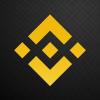 Blockchain networks overview: What makes these networks the best?
Blockchain networks overview: What makes these networks the best? Blockchain networks overview: What makes these networks the best?
Since Ethereum emerged, several Blockchain Networks have appeared each one with different benefits and focuses. Lets compare them.

Cover art/illustration via CryptoSlate. Image includes combined content which may include AI-generated content.
Despite years of development and increased security levels, the crypto industry is still being heavily impacted by hackers. In Q1 of 2022, online criminals managed to steal almost $1.3 billion, across 78 recorded incidents. In many cases, the problem did not lie with the protocols, but with the hackers’ ability to trick unsuspecting users. But, there were also numerous instances where flaws and exploits were the reason why hackers managed to get away with the money.
This is why we wanted to make a comparison of some of the biggest and most popular blockchain networks, and see which of them are the best, as well as the safest.
What are blockchain networks?
A blockchain network is a technical infrastructure that provides smart contract and ledger services to applications. Essentially, they are blockchains that can be used as development platforms for creating a variety of blockchain products.
They came back when Ethereum first emerged and shifted the attention from cryptocurrency trading towards blockchain’s potential as it can be used to create virtually any type of app, protocol, or service that exists off-chain.
As a result, we now have countless Ethereum-like blockchains that all offer to serve as Ethereum alternatives. This leads to further diversification and decentralization of the DeFi sector, and it is ultimately a good thing from that point of view.
But, with that said — it also leads to the question of which one is the best one?
Comparing the top 5 blockchain networks
Solana
- Solana is one of the fastest and most popular Ethereum alternatives.
- At the time of writing, Solana has 1,482 transactions per second (TPS) on average, with near-instant processing time.
- The project can easily scale to 100,000 TPS, and its record was around 400,000 TPS, which is where the network started to experience issues.
- Its average transaction fee is only $0.00025 per transaction.
- Solana had a serious bug that put $2 million in tokens at risk. However, the vulnerability has been fixed.
- The blockchain is deemed rather safe due to high entry barriers in becoming a node, which prevents bad actors from joining. The project had 1,469 nodes as of February 2022.
Avalanche
- Avalanche calls itself “the fastest smart contracts platform” in the blockchain industry, “as measured by time-to-finality.”
- The project claims that it can support over 4,500 transactions per second.
- A Yahoo Finance report from January 28th, 2022, highlighted that Avalanche processed 1.1 million transactions on January 27th. This was 96% of Ethereum’s load, and an average Avalanche fee was $0.23, while on Ethereum it climbed up to $62 per transaction.
- According to Avalanche Explorer, the project has 1,441 validators at the time of writing.
- Like Solana, Avalanche also experienced bugs in the past, but it managed to fix them since their discovery.
BNB Smart Chain
- BNB Smart Chain, formerly known as Binance Smart Chain is Binance’s second blockchain, and its response to the Ethereum network. It was launched to grant Binance access to the DeFi sector.
- BNB Smart Chain (BSC) is capable of processing 160 TPS with full network usage, with an average TPS at the time of writing being 75.5.
- As of April 5th, the average transaction fee on BSC is 0.0008 BNB, which represents a 46.67% drop from the same time in 2021. BNB Smart Chain has featured the same fee for several months now.
- However, BSC has only 21 validators for its mainnet, each of which had to self-delegate 10,000 BNB in order to get this role. This makes the entry barrier quite high, but still, the number of validators is quite low. Binance solves this by selecting validators every 24 hours.
Oasis Network
- Oasis is another privacy-enabled, scalable layer-1 network that combines low gas fees and high throughput with secure architecture to set up a foundation for Web3.
- The project claims that it can process up to 1,000 TPS with around 6s block times.
- Oasis also claims that its fees are 99% cheaper than Ethereum’s. As far as actual amounts go, they sit at around $0.15 per transaction.
- The project has around 186 validators, with 110 of them being active, and the rest inactive, according to Oasis Scan.
- While better than BSC, this is still fairly low as far as decentralization goes, especially in comparison to Ethereum’s 300,000 validators as of February 2022.
Polygon
- Polygon, formerly Matic Network, is a well-structured, easy-to-use platform for Ethereum scaling and infrastructure development.
- It features a core component called Polygon SDK, which is a flexible framework that supports building various types of applications.
- Thanks to its architecture, Polygon claims that it can process up to 65,000 TPS, with gas fees going from $0.1 to $0.5 on average.
- Polygon is designed with 100 validator slots, and each validator needs to stake 1000 MATIC tokens as collateral in order to operate the full node.
Conclusion
According to the presented details of all the networks we reviewed, Solana appears to be not only the fastest, but also the most scalable, cheapest, and most secure chain. It can easily scale to 100,000 TPS with a maximum of 400,000, it has nearly 1,500 nodes, and each transaction costs only a fraction of a fraction of a cent.
The project did have a rather serious bug, but it fixed it in record time, and since then, it did a lot of work to ensure that any similar issues would be removed, which is why we recommend Solana as one of the best Ethereum alternatives that the blockchain world has to offer.



































































